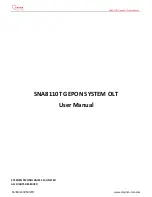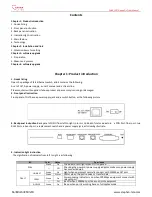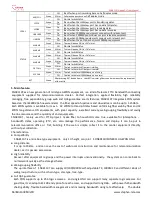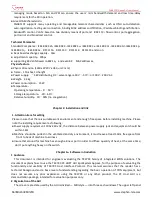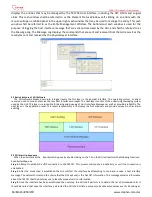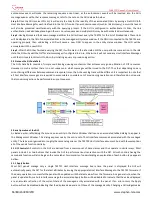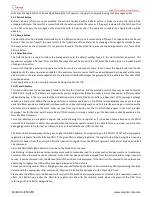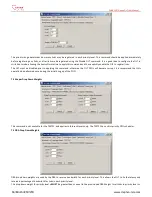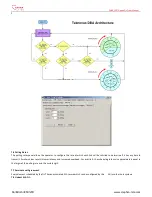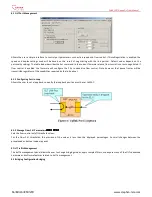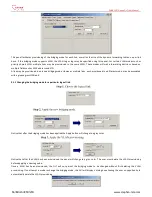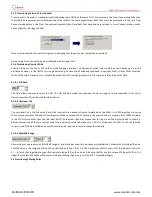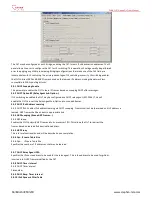
SNA8110T Gepon OLT User Manual
陈泽科技有限公司
www.stephen-tele.com
autonomous event will make the remaining sequence non-linear, as the autonomous events will be inserted into the GUIs
message queues with other response messages, refer to the note on the GUI data path below.
Step 3:
Once the GUI receives this list, it will query the links for the identity of their associated ONUs by issuing a Get ONU Info
Host Interface Message for each link found in the list. Of course if an autonomous event (such as link discovery), occurs that event
will also be processed simultaneously with the querying process. If the GUI is configured to authenticate its links, the link
authentication will also take place. Again there is no set sequence and multiple LLIDs may be authenticated simultaneously.
Step 4:
Having discovered the known managed entities the GUI will next query the TK3721 for the list of blocked links. These links
will be displayed in the list of unassociated links in the managed entity status window. If the ONU is connected to the TK3721 and
operating properly, then unblocking a LLID will cause a new ONU to appear in the entity status window. The LLID will be
associated with this new ONU.
Step 5:
After the GUI has finished querying the OLT, it will remain in the idle state until the user performs some action. In the idle
state the GUI will audit the OLT for alarm messages if configured to do so, otherwise it will not send any Host Interface Messages
until the GUI operator directs it to do so, by initiating a query or provisioning action.
2.3 Note on the GUI data Path
The GUIs Data Path consists of simple non-blocking queuing mechanism that achieves very good utilization of OLT recourses.
However in such a system there is no set sequence in which messages will be issued to the OLT. Thus that depending on very
minor timing differences between command response times, the GUI event log trace will be different. It is important to note that
all host interface messages are required to encapsulate a complete set of provisioning operations and therefore do not require
that provisioning actions be performed in any set sequence.
3 Basic Operation of the GUI
As stated earlier, left-clicking the mouse on an entity in the Status Window shall cause an associated tabbed dialog to appear in
the Management Window. This dialog exposes nearly the entire set of host interface commands associated with the managed
entity. The tabs are organized into roughly the same categories as the TK37XX Host Interface document. And with few exceptions
all of the panels function similarly.
3.1 GUI Controls
All controls in the GUI are derived from a common set of base classes and thus operate in similar ways. Most
panels include 1 or two buttons that invoke the GUI to perform various transactions with the OLT. All such controls having the
same basic function will also be given the same label. For simplicity of understanding an explanation of each button type appears
bellow.
3.1.1 Apply Button
Most GUI panels manage only a single TK3721 Host Interface message. Every time the panel is displayed the GUI will
automatically query the OLT for the latest attributes by issuing the appropriate Host Interface Message to the TK3721 firmware. If
the query operation is successful the panel will be updated with the latest values from the firmware. As a general rule, when the
panel is updated from a host interface message the associated Apply button will be disabled to indicate that the values displayed
are an accurate reflection of the current state of the managed entity associated with the panel. If an error occurs the Apply
button will not be disabled indicating that the displayed values are not those of the managed entity. Changing a GUI widgets value

